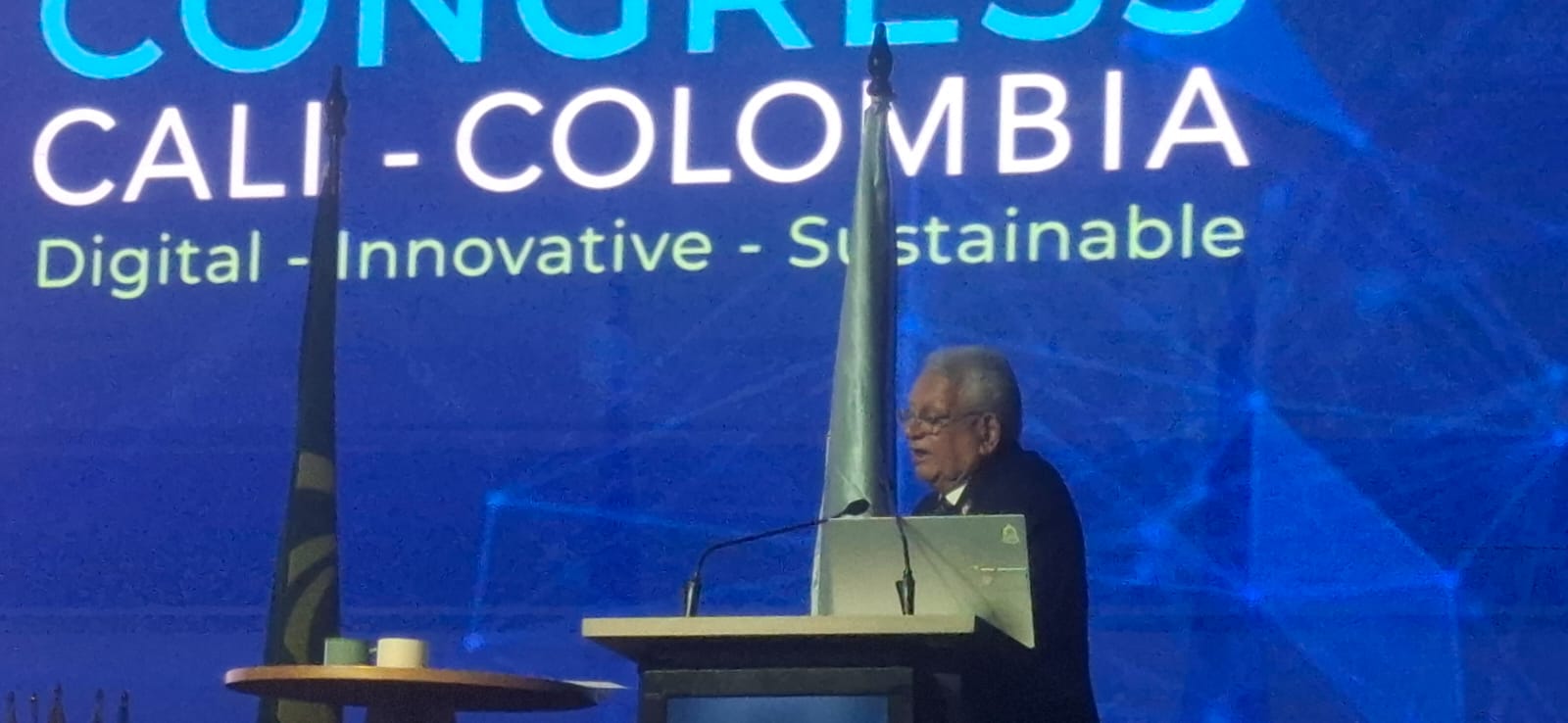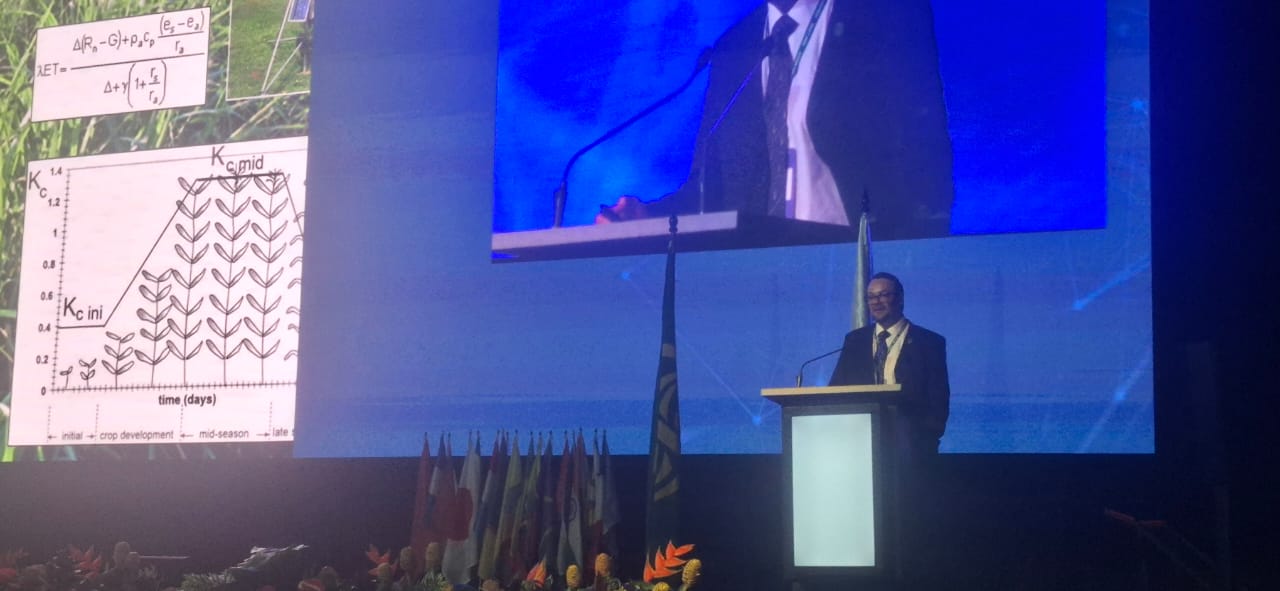A Century of Innovation: The ISSCT from 1924 to 2024

As President Louis Jean Claude Autdry opens the congress, we embark on a centennial journey through the legacy of the International Society of Sugar Cane Technologists (ISSCT)—from its inception in 1924 to 2024.
1924 – A Global Vision Takes Root
Founded in 1924, the ISSCT holds the distinction of being the oldest and largest organization of sugar technologists worldwide. Its inaugural congress was held in Honolulu, Hawaii, marking the beginning of a tradition of gathering global experts every three years.
1924–1938: The Foundational Era, ealy expansion
- 1924 – ISSCT is founded in Honolulu, Hawaii, bringing together scientists, engineers, and technologists from around the world to address challenges in sugarcane cultivation and processing.
- 1927 – The second Congress is held in Havana, Cuba, marking the society’s first major presence in Latin America.
- 1929 – Congress in Soerabaia, Indonesia, expands ISSCT’s reach into Asia.
- 1932 – San Juan, Puerto Rico, hosting reinforces the Caribbean’s strategic role in global sugarcane production.
- 1935 – Brisbane, Australia, showcases advances in tropical agronomy and mechanization.
- 1938 – Baton Rouge, USA, becomes the last Congress before a hiatus caused by World War II.
1950–1970s: Post-War Renewal and Expansion
- 1950 – The Congress resumes in Brisbane, symbolizing global recovery and technological renewal in the sugar industry.
- 1956 – New Delhi, India, introduces large-scale participation from Asia, fostering international research networks.
- 1962 – Mauritius hosts the Congress, highlighting the role of small-island nations in sugar research.
- 1968 – Taipei, Taiwan, reflects the increasing importance of technological innovation in crop improvement.
- 1974 – Durban, South Africa, brings attention to emerging technologies in processing efficiency and disease management.
1980s–1990s: Institutional Strengthening and Scientific Integration
- 1980 – Manila, Philippines, showcases breakthroughs in pest control and sustainable cultivation practices.
- 1983 – Havana, Cuba, focuses on bioenergy and by-products.
- 1986 – Creation of the Executive Committee, ensuring year-round governance between congresses.
- 1989 – São Paulo, Brazil, emphasizes biotechnology and improved breeding programs.
- 1992 – Bangkok, Thailand, highlights mechanization advances in harvesting.
- 1995 – Cartagena, Colombia, sees the establishment of the Permanent Secretariat, enhancing global coordination.
2000s–2010s: Governance, Technology, and Sustainability
- 2001 – Brisbane, Australia, focuses on environmental sustainability and green energy.
- 2005 – Guatemala City, Guatemala, highlights sugarcane’s role in rural development.
- 2007 – Durban, South Africa, integrates precision agriculture and data-driven decision-making.
- 2010 – Veracruz, Mexico, features early applications of molecular biology to crop improvement.
- 2013 – São Paulo, Brazil, sees the adoption of the Congress Operations Manual, modernizing event organization.
- 2016 – Chiang Mai, Thailand, highlights smart agriculture and global market adaptation.
2019–2024: Modernization and Centennial Celebration
- 2019 – Tucumán, Argentina, focuses on climate resilience and bioeconomy.
- 2023 – Hyderabad, India, approves constitutional reforms, formalizing updated governance and policy frameworks.
- 2025 – Cali, Colombia, will host the Centennial Congress, celebrating a century of science, innovation, and collaboration.
Governance and Knowledge Sharing
Across its history, ISSCT has remained committed to its mission: “to promote the sustainable advancement of the sugar cane industries of the world and associated communities, through promoting innovative research, development and the adoption of technology, and by sharing the knowledge among its members for their professional development” .
To that end, it has:
- Published the proceedings of all its congresses since 1924.
- Conducted workshops and webinars in the inter-congress periods.
- Formed a robust governance structure including Council, Executive Committee, Secretariat, Technical Program Committee, and Congress organising bodies
2025 and the Centennial Congress
Looking ahead, ISSCT is preparing to celebrate 100 years with the XXXII Centennial Congress in August 2025, to be held in Cali, Colombia, organized with Tecnicaña—the Colombian Association of Sugar Cane Technicians.
Summary Timeline
| Year | Milestone/Event |
|---|---|
| 1924 | Foundation and first Congress in Honolulu |
| 1927–1938 | Early global expansion (Cuba, Indonesia, etc.) |
| 1950s–70s | Post-war resurgence and congresses in global venues |
| 1986–1995 | Institutional strengthening: Executive & Secretariat |
| 2000–2013 | Governance enhancements and operations manual |
| 2016–2023 | Modernization, constitutional reform, Congresses |
| 2025 | Centennial Congress in Cali, celebrating 100 years |
Legacy and Future
Reflecting on this journey, President Autdry remarked:
“For one hundred years, ISSCT has united minds across continents, transforming challenges into solutions. Our mission remains unchanged: to advance our industry sustainably, scientifically, and inclusively for generations to come.”
From its modest beginnings in Honolulu to becoming a global powerhouse of sugarcane science and innovation, ISSCT stands as a testament to what collective vision and collaboration can achieve.

